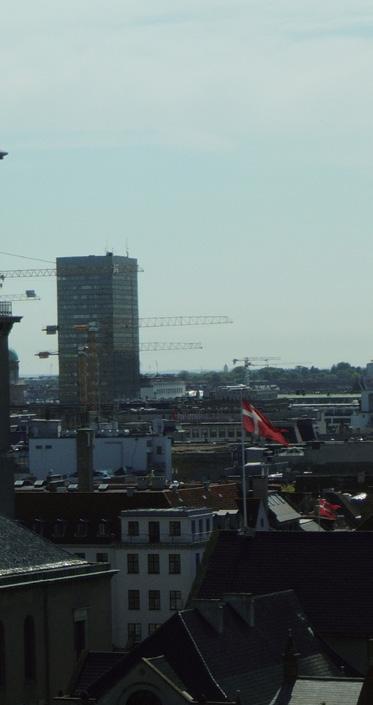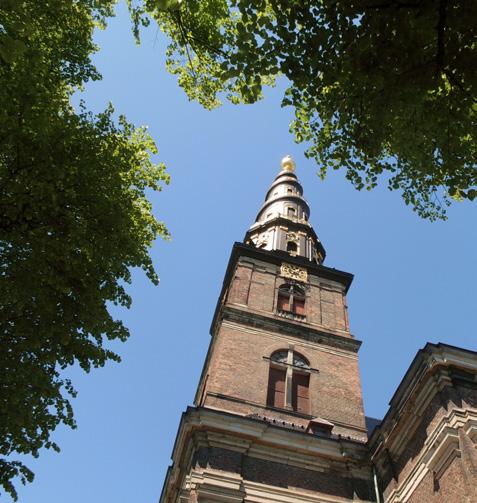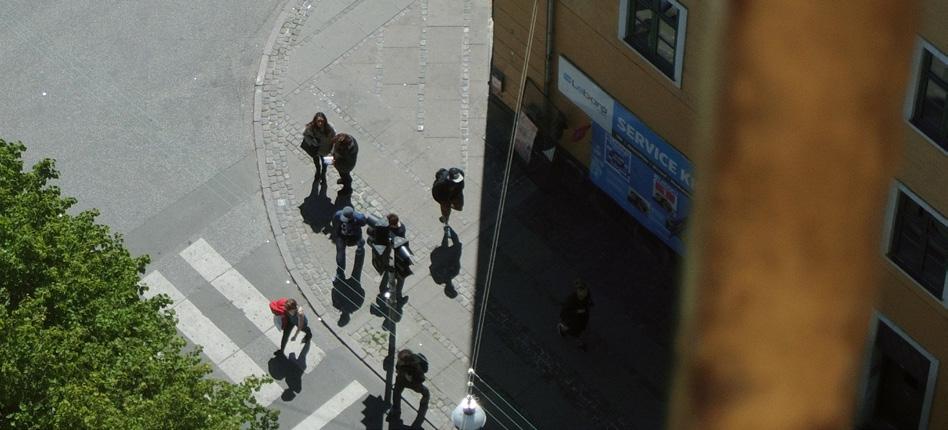

Copenhagen
The characteristic green dome of The Marble Church is quite magnificent, you wont find anything like this anywere else in the city, the dome is open to the public. ►

Fredericks Church (The Marble Church)
Most tourists mistakenly believe that the Marble Church is the cathedral of Copenhagen, understandebly so, it must be one of the most impressive churches in the Copenhagen area, but now you know this is in fact not the case.
The church lies beautifully in line with Amalienborg castle as well as The Opera House in the middle of the elegant area of Frederiksstaden.
The foundation stone was set by king Frederick V on October 31, 1749, but the construction was slowed by budget cuts and the death of the architect Eigtved in 1754.
In 1770, the original plans for the church were abandoned by Johann Friedrich Struensee. The church was left incomplete and, in spite of several initiatives to complete it, the church stood as a ruin for nearly 150 years.

Vor Frue Church (Copenhagen Cathedral) burned down to the ground in 1807 after the British bombardment, the church was rebuilt, but it is said that the tower now only stands half as tall as a reminder of what happened. ►

Vor
Frue
(Church of our Lady, Copenhagen Cathedral)
The construction of the original church started already in 1187. The current church however, is from 1829.
In 1807 the church fell victim to the bombardment of Copenhagen by the British, unfortunately their navy used the church tower for range practice, which in turn made the entire church burn down.
In 2007 the church had a 200 year anniversary where the church “burned down once more” which I was there to witness.
The current tower is quite controversial as the original design did not include any tower, but the population demanded one, it is designed after an old medieval tower once located there, and it is only 60 meters tall. - only about half as tall as the previous one.
The church only recently became a cathedral for Copenhagen. Several important events have taken place here throughout the ages, including the coronation of several kings. As well as the marriage of our current Crown Prince Frederik and Crown Princess Mary.



Saint Nikolaj Church hasn’t officially been a church since 1805 when parts of it burned down the current spire was built in 1909. ►

Christiansborg is the home of Danish Parliament, the tower most recently opened to the public, it’s the tallest point in Copenhagen. ►
◄ Christians Church was built for the German minority in Copenhagen.
Vor Frelser Kirke
(Church of our Saviour)
Our Saviors Church is probably one of the most famous churches in Denmark, most famous for its spire and external staircase.
The building of a church had been planned by Christian IV since 1617, a temporary church was built in 1639 construction of the current church did not start untill 1682.
The original architect was Lambert van Haven, it was inaugurated in 1695, but looked notoriously temporary, and several important hings such as the altar and tower were still missing.
The church got its permanent altar in 1732 and in 1747 plans for the tower was revitalized.
The tower was finished in 1749 and King Frederik V climbed the stairs at the opening.

Urban Legend
There is a long lived urban legend stating that the architect killed himself by jumping from the top of the spire, when he realised the spire turned the wrong way - anticlockwise - There’s no truth to the myth though, as the designer of the tower Laurids de Thyrah, died 7 years after the tower was completed.



The rebus can be interpreted in the following way: Lead God, the right teaching and justice into the heart of the crowned King Christian IV, 1642. 1642 was the year when the tower was completed. ►

Rundetårn
(The Round Tower)
The round tower, is the oldest working astronomical observatory in Europe, it was used by Copenhagens University untill 1861.
Today the observatory is being used by amateur astronomers and others who are willing to explore space.
The tower itself does not function as a church tower which is important to note. Rather it is connected to the Trinitatis Church. The name stems from the Holy Trinity, but it also points to the fact that, in conjunction with the Round Tower, this construction served as church, observatory and university library.
The building is 6 3/4m tall with a diameter of 6 meters. A 1:3 Scale of the tower was built in Solvang, California, a largely danish colony, it was also included in the 2013 version of Sim City.
The library
Around halfways up the tower you will find the library hall, where all of Copenhagen Universitys book collection was once held. The library opened in 1657 and gave room for more than 10.000 books, that had been spread around elsewhere in Copenhagen before.
Today
In 1861 the library grew so big that it had to be moved elsewhere, the empty hall was used for both painters, as well

as storage room for the Zoological museum untill 1987 when the hall was restorated.
The hall is now known for holding several exhibitions and other cultural events throughout its opening times. (open from mid-October to midMarch) influential in the late 16th and 17th centuries among scientiests, however fell out of use when it was proven by James Bradley that the Earth did in fact move around the Sun and Tycho’s system fell out of use.
Tycho Brahe
Tycho Brahe is the person we consider the founding father of modern day astronomy in Denmark, his observations were some five times more
accurate than the best available observations at the time, and he did not even use a telescope for it.
After disagreements with the new Danish king, Christian IV, in 1597, he went into exile, and was invited by the Bohemian king and Holy Roman Emperor Rudolph II to Prague, where he became the official imperial astronomer. There, from 1600 until his death in 1601, he was assisted by Johannes Kepler, who later used Tycho’s astronomical data to develop his three laws of planetary motion.
Tycho Brahe invented The Tychonic system, he considered the Earth center of the universe, the system was very influential in the late 16th and 17th centuries among scientiests.
The Church of Holmens (Holmens Kirke)
Is quite unique as it was first built as an anchor forge in 1563, but later converted into one of the first naval churches in the world by Christian IV. It is also known for being the host of Queen Margrethe II of Denmark and Prince Henriks wedding in 1967.
St. Albans Church (The English Church)
One of the things I really like about the Copenhagen churches is the diversity in architecture, Saint Albans Church (often simply refered to as The English Church) is an Anglican church built in 1885.
It was designed by Arthur Blomfield in a gothic revival style and is located close to the Citadel, Kastellet, in Copenhagen, at the opening royals such as Tsar Alexander III and Maria Feodorovna of Russia (Danish born Princess Dagmar) and King George I of Greece (also Danish born) participated.

